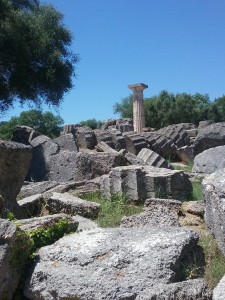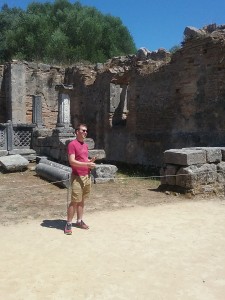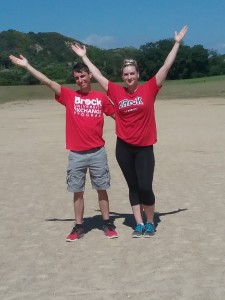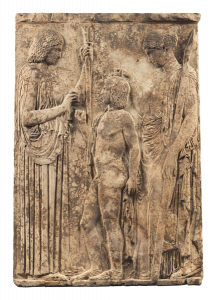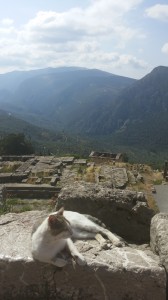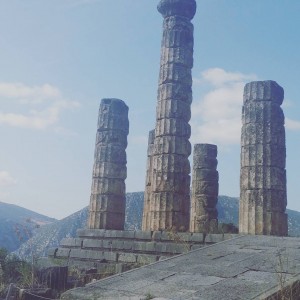A bronze shield from the Battle of Sphacteria, 425 BCE, is displayed at the Agora Museum in Athens, Greece. The round and heavily damaged shield has lost its bronze colour and is now grey. Spartan shields were generally created from wood with bronze for its outer layer. The 30-pound shield is small enough to hold with one arm, while still able to guard much of the body.
The Athenians obtained the shield after their victory against the Spartans at the Battle of Sphacteria. Many of the shields from the Battle of Sphacteria were recovered and returned to Athens as trophies of the triumph. This was a proud moment for the Athenians and a devastating time for the Spartans, having just surrendered.
Because these shields have been in battle and are misshaped from damage, this bronze shield specifically is the only one of its kind, making it quite unique. The shield contains an inscription on its back which reads: “ΑΘΗΝΑΙΟΙ ΑΠΟ ΛΑΚΕΔΑΙΜΟΝΙΩΝ ΣΚΠΥΛΟ.” This translates to “the Athenians from the Lacedamonians at Pylos.” This adds to the uniqueness of the bronze shield at the Agora Museum. It is clear this shield was important to the Athenians because they inscribed it and showed it off as a trophy for people to see.
Although the battle is at Sphacteria, the Athenians claim they received it from the Spartans (Lacedamonians) at Pylos, which is on the Peloponnesus in Greece, not the island where the battle occurred. Sparta had a base at Pylos, but sent a fleet to Sphacteria after the Battle of Pylos where they were isolated.
This shield was significant because it demonstrated the power that the Athenians had. They were powerful enough to defeat the militaristic Spartans. Initially, Sparta did not want to fight in the battle, as they proposed a truce knowing that they were outnumbered. The Athenian, Cleon, decided to attack regardless due to the failed peace treaty, achieving victory.
This defeat for Sparta resulted in a demoralizing citizen-state. The Spartan army was too weak after the Battle to successfully attack Athens, meaning that there was proof Sparta was no longer the biggest military power in Greece.
Much of the Battle of Sphacteria is known through the source of Thucydides who documented the events of the Peloponnesian War, ultimately ending in Spartan victory. Thucydides disliked Cleon so there is some biased against him in his History.
Examining the shield while in Greece at the Agora Museum will provide an opportunity to see the damage and colour easier and closer. If there is information written about the shield, then I may obtain more information about it that I don’t know as well. I’m interested to see if a lambda symbol (Λ) is noticeable on the shield. This letter represents Laconia for the Spartans which was the region in which Sparta resides.
Overall, the bronze shield from the Battle of Sphacteria was an important symbol of victory for the Athenians. They demonstrated that they were a powerful citizen-state in Greece, during the fifth century BCE. The shield at Agora Museum honours the Athenian victory at the Battle of Sphacteria and allows the audience to view a piece of the past.
Resources used:
http://www.ancientmilitary.com/spartan-weapons.htm
http://ancient-greece.org/museum/agora.html
http://www.livius.org/articles/battle/sphacteria/


